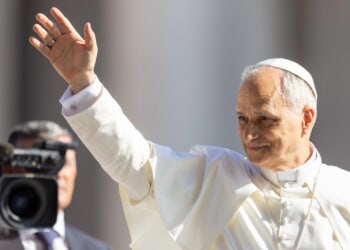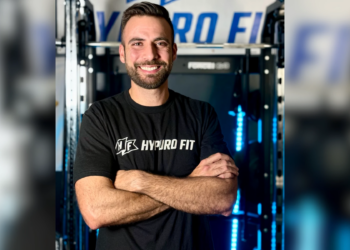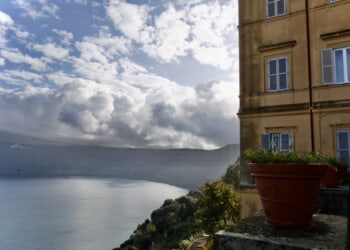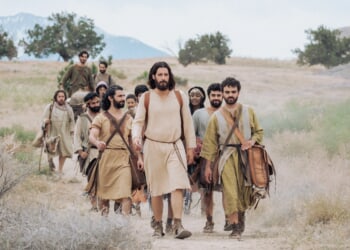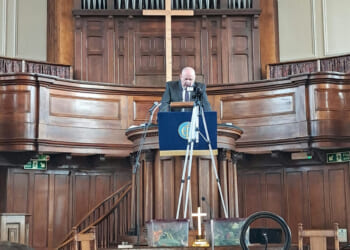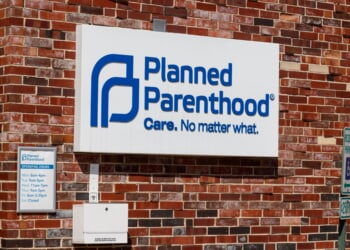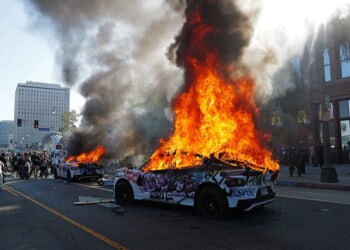CNA Newsroom, Jul 26, 2025 /
11:15 am
Antonia Raco, a 67-year-old Italian woman long affected by an incurable neurodegenerative illness, was officially introduced to the press on July 25 in Lourdes, where her healing was recognized as the 72nd miracle attributed to the intercession of the Virgin Mary since the apparitions of 1858.
In a moment of great joy, the 72nd miracle of Lourdes Antonia Raco spoke about her miracle. An incredible experience for many to witness on our pilgrimage and a great reminder that we are all pilgrims of hope. pic.twitter.com/Y0Ahj4zOcN
— Archdiocese of Liverpool (@lpoolcatholic) July 25, 2025
Diagnosed in 2006 with amyotrophic lateral sclerosis (ALS) — a progressive and fatal condition — Raco experienced a recovery that defied medical explanation.
First announced by the Sanctuary of Lourdes on April 16 this year, the recognition marked the culmination of 16 years of medical, canonical, and pastoral inquiry. Raco, a mother and active parishioner from Basilicata in southern Italy, had been living with the disease for several years when she traveled to Lourdes in 2009.
“I had wanted to go to Lourdes since I was a child,” she recalled. That wish came true that summer, when she and her husband Antonio travelled to the shrine with the Italian pilgrimage association Unitalsi.
The experience, however, was not exactly as she had once imagined: She arrived in a wheelchair, already struggling to breathe and swallow.
On the second day, sanctuary volunteers brought her to the baths. “We prayed together. That’s when I heard a beautiful young female voice say three times: ‘Don’t be afraid!’” she recounted during the press conference in Lourdes, held in the presence of religious and medical authorities.
Raco wore the white veil and uniform of the Hospitallers of Lourdes — the volunteer caregivers she now joins each year, assisting the sick with the same compassion once shown to her.
“At that moment, I burst into tears and prayed for the intentions I had brought with me.”
She described a sudden, sharp pain in her legs during immersion, as though “they were taken away from me.” She did not disclose what had happened to anyone during her stay and returned home in a wheelchair.
It was there, in her living room with her husband Antonio, that she again heard the same voice urging her, “Tell him! Call him!” Obeying the voice, she called out to her husband, who had just stepped into the kitchen. “Something has happened,” she told him.
In that moment, she stood unaided for the first time in years. Overcome with emotion, the couple embraced, crying together as they realized she was cured.
Though overjoyed, Raco was initially unsure of how to speak about her experience. She eventually confided in a parish priest in her diocese of Tursi-Lagonegro in Basilicata, who urged her to undergo medical evaluation.
Soon after, the local archbishop who had accompanied the pilgrimage that year, Francesco Nolè, visited her and, after hearing her story, told her: “Antonietta, the Lord has entered your home and given you a gift – but it is not for you alone. It is for all of us.”
The road to recognition took more than a decade of thorough medical evaluation and expert review. “There is no cure for ALS,” noted Professor Vincenzo Silani, a leading neurologist involved in the investigation. He was among those who confirmed both the diagnosis and the inexplicability of Raco’s recovery. “Patients are doomed to get a little worse every day.”
Dr. Alessandro de Franciscis, the permanent doctor at the Lourdes Sanctuary, reminded the audience that the Church considers a healing miraculous only if it is sudden, complete, lasting, medically inexplicable, and not attributable to treatment or gradual recovery.
(Story continues below)
Subscribe to our daily newsletter
These criteria, which continue to guide the Church’s discernment today, were first established by Cardinal Prospero Lambertini, later Pope Benedict XIV.
Debate within the International Medical Committee of Lourdes (CMIL) was initially inconclusive when the case was first presented in 2019. But a new international consensus on the diagnosis of ALS, published in 2020, provided the framework for reassessment. In 2023, Silani re-evaluated Raco in Milan and confirmed the definitive cure.
Finally, in November 2024, a secret vote was held among 21 members of the International Medical Committee of Lourdes: 17 voted in favor of an unexplained, complete, and lasting cure — meeting the two-thirds majority required by Church criteria.
Following the positive medical vote, the case was referred to the current bishop of Antonia Raco’s home diocese, Vincenzo Carmine Orofino, who formally recognized the miracle on April 16 of this year.
Bishop Jean-Marc Micas of Tarbes and Lourdes, who participated in the scientific process without voting, praised the rigor and transparency of the medical discussions. “What impressed me most,” he said, “was the freedom of the experts. They are not there to defend a cause, but to seek the truth.”
He also reminded the participants that miracles never impose faith. “Even the Resurrection did not force anyone to believe,” he said. “A miracle is a sign — a gift to be received in the light of faith.”
Closing the press briefing, the rector of the sanctuary, Fr. Michel Daubanes, expressed deep emotion and gratitude as he recalled the honor of announcing the miracle during the 6 p.m. rosary on Holy Thursday, April 17, just minutes before it was proclaimed at the cathedral of Tursi-Lagonegro. “
We often say: ‘If I saw a miracle, I would believe.’ But the truth is: if I believe, I can see miracles,” he reflected. “This healing is not just a story from the past. It is a living testimony that continues to bear fruit.”




